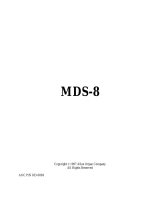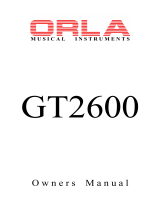Johannus Wesley Andante is a versatile digital organ that offers a rich and authentic organ playing experience. With its comprehensive selection of stops, effects, and programmable combinations, the Andante provides organists with the flexibility to perform a wide range of musical styles. The intuitive user interface and helpful registration examples make it easy for organists of all levels to create and save their own unique sounds.
Johannus Wesley Andante is a versatile digital organ that offers a rich and authentic organ playing experience. With its comprehensive selection of stops, effects, and programmable combinations, the Andante provides organists with the flexibility to perform a wide range of musical styles. The intuitive user interface and helpful registration examples make it easy for organists of all levels to create and save their own unique sounds.
















-
 1
1
-
 2
2
-
 3
3
-
 4
4
-
 5
5
-
 6
6
-
 7
7
-
 8
8
-
 9
9
-
 10
10
-
 11
11
-
 12
12
-
 13
13
-
 14
14
-
 15
15
-
 16
16
Johannus Wesley Andante is a versatile digital organ that offers a rich and authentic organ playing experience. With its comprehensive selection of stops, effects, and programmable combinations, the Andante provides organists with the flexibility to perform a wide range of musical styles. The intuitive user interface and helpful registration examples make it easy for organists of all levels to create and save their own unique sounds.
Ask a question and I''ll find the answer in the document
Finding information in a document is now easier with AI
Related papers
-
Johannus Wesley Allegro User manual
-
Johannus Wesley Moderato User manual
-
Johannus Prestige 100 User manual
-
Johannus Opus 10 User manual
-
Johannus Wesley Festivo User manual
-
Johannus Opus 10 User manual
-
Johannus Sweelinck 20 User manual
-
Johannus Wesley 42 User manual
-
Johannus Rembrandt 2000 User manual
-
Johannus Rembrandt 2000 User manual
Other documents
-
 Allen Organ Company MDS-8 User manual
Allen Organ Company MDS-8 User manual
-
Rodgers A658 Owner's manual
-
Allen Organ Renaissance R211 Owner's manual
-
 Orla GT2600 Owner's manual
Orla GT2600 Owner's manual
-
Yamaha EZ30 Owner's manual
-
Yamaha EZ-30 User manual
-
Roland AT-60R Owner's manual
-
Yamaha PSR350 User manual
-
Panasonic SXEA5 Operating instructions
-
Yamaha PSR270 Owner's manual

















